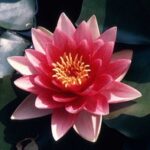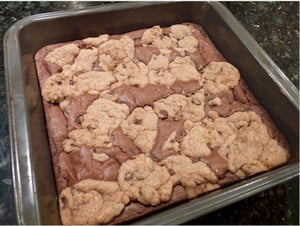A water garden is a man made or tended surface of water that contains plants, rocks and/or fish. They can vary in size from a small barrel or porch container to a full sized back yard pond. The elements within a water garden generally are reflective of its size. Smaller gardens may only contain a few aquatic plants and perhaps a man made water fall or rock display. Medium gardens may also incorporate gold fish and a larger variety of aquatic plants. Finally, a full sized large water garden usually contains koi, frogs, and all variety of aquatic life being in essence a man-made or tended pond.
Water and bodies of water have always been a calming and inspiring element in human history. Being a known necessity of life humans have always lived near the water and it has found its way into every religion and culture ever known.As with anything so vital to human life water ends up a focus of worship, contentment and survival as a result water gardens have been popular for thousands of years.
The step by step and simple guide on how to make a water garden will provide you with the necessary knowledge to make your own water garden and guide you through the necessary steps to make your watery fantasies a wet garden reality.
The very fist step that should be taken when creating any garden, let alone a water garden is to plan your garden. You should consider important elements like:
How much work do I want to put into this garden?
Maintaining a water garden can be a lot of work depending on its size. Generally the smaller the garden the less work will be required to create and maintain it. Know upfront what type of wet garden you want to make and the size you would like it.
How much space do I have or want to use?
Even if you do not mind putting in the time and effort for a large garden consider what you have space for. Keep in mind that the size of your garden will affect what you can put within it. If you want Koi for example you will need a large pond.
Where do I want to put the garden?
Water gardens require around 6-8 hours of sunlight so be sure to choose a well lit area. For easier maintenance you may want to avoid planting close to trees. Also be wary of water run off from rain as especially in cities this may contain contaminates.
Ideally a water garden is meant to be seen and can be enjoyed year round. However if you garden is large you may want to place it a bit away from your home as it will attract wildlife.
How much money do I have to spend on supplies?
If you don’t have an existing pond a large water garden can be an expensive venture. Once you have decided what size you want your garden and what you want within it (see steps 1 and 2 for more info.) you’ll want to price these things out an possibly alter your plans to fit your budget.
All of these things are going to depend on your own personal preference and needs.
Aquatic plants are generally the focal point of a wet garden. There are six main types of aquatic plants each that require different levels of moisture and can be used to create different looks.
Type One: Water Lillies, Nymphea and Lotus
Water lilies root in the bottom of the water and have leaves that float at the surface. They vary greatly in type and color. Some water lotus or lilies are not suitable for small ponds. You can even acquire night blooming lilies to create a moon water garden.
Type Two: Oxygenators
Oxygenators are plants that grow entirely under water and require constant submersion to survive. Some root at the bottom while others free float in the water. These plants are essential if you wish to keep fish within your garden and don’t want to use artificial oxygenators as with a fish tank.
Type Three: Floating Water Plants
Floating Water plants are as the name suggests plants that float on the surface of the water. They do not require soil at all to survive and are entirely aquatic. These types of plants aid in water clarification but also grow rapidly and will need to be maintain and controlled.
Type Four: Partially Emerging from The Surface Plants
These plants root in the mud portions of the water and protrude partially. They have more exposed than lilies or lotus but can handle deeper water.
Type Five: Marginal Plants
Marginal plants do not like deep water and grow in the shallower portions of water gardens. They will die it they dry out, should not be fully submersed. This is easy to accomplish as marginal plants tend to be tall. They may require some support from rocks if wind is an issue.
Type Six: Bog Plants
Bog type plants grow in mud but do not require planting actually within the water. These plants are usually found on the edges but not in water gardens.
The list of plants included in each type is extensive. These basic descriptions should give you a rough idea of what can be used in your water garden however. You can purchase water plants from gardening stores, nurseries and pet stores. All of which should be able to verify the proper planting for each plant. Keep in mind that no more than 50-60% of the surface of a wet garden should be covered in plants, less so if you intend to add fish.
Fish are a common element in water gardens as they maintain the roots, control insects and add an active element. The two most common fish found in water gardens are koi and goldfish.
Koi
Koi will eat some plants and you should consult with the pet store you purchase them from as to what is and isn’t safe for your pond. They also require much more space than goldfish with a minimum of 1000 gallons and 3 feet in depth for multiple koi. A single koi can be kept in slightly smaller pond, but again these fish become large and require space.
Goldfish
Goldfish require far less space with a minimum of two foot of water depth and can be kept even in small bucket gardens. They resemble koi but do not grow to be as large.
Some other fish that may be used: Golden Orfe, Plecostomus, and Mosquito Fish.
In addition to fish many wet gardens include artistic rock displays or man made water falls. A water fall will aid in circulation of the water in your pond as well as create a soothing sound around the pond.
Once you have fully planned and decided what you want within your water garden all that is left to do it put it all together. Depending on your plans this may be involved or fairly simple. A small porch water garden requires little more than a water tight container, dirt, rocks, water and your selected elements. If you have an existing pond all you have to do is tend to and shape the garden into your desired plan.
Creating a pond is what gets tricky. First you’ll need to dig out your pond. Keep size and depth in mind for the fish and plants you have selected. You will want to create a stepped hole so to speak that has deeper locations and shallower not just a hole in the ground. You need to mimic nature. The bottom of this hole will need to be lined with something to prevent the water from seeping into the ground such as pond underlayment or rubber pond underlining. You can purchase these or complete pond kits in many locations. Once completed the pond needs to be filled and its water tested to assure the safety of plants and other living elements.
After that it’s simply a matter of following your water garden plan.


